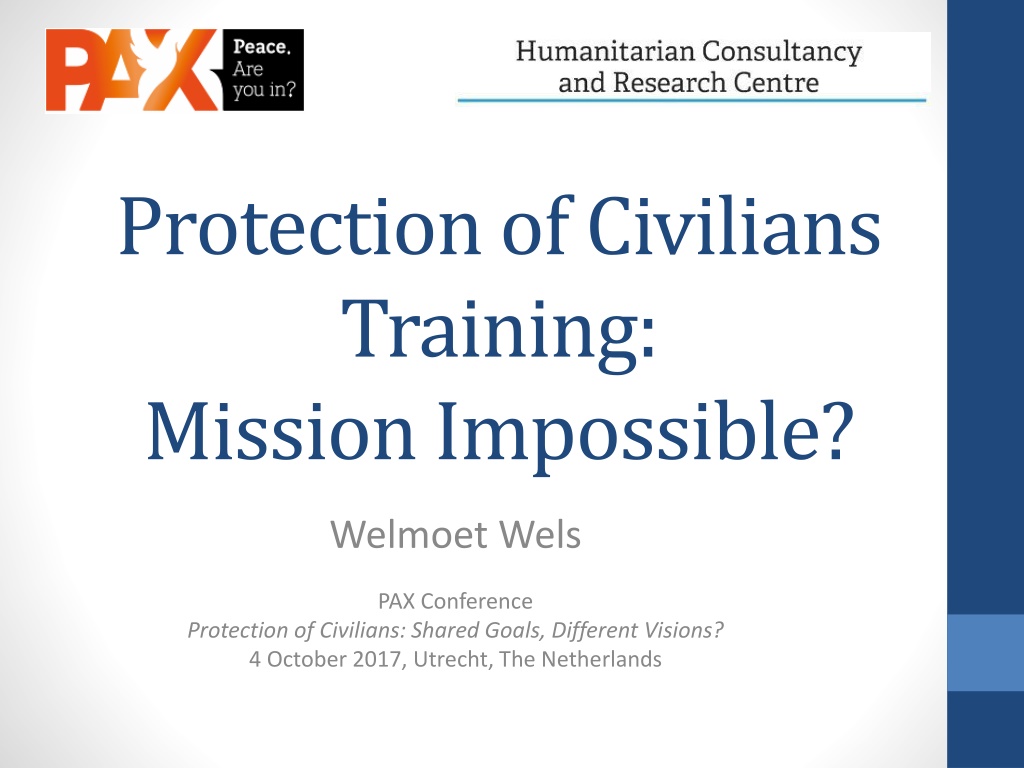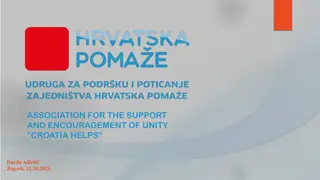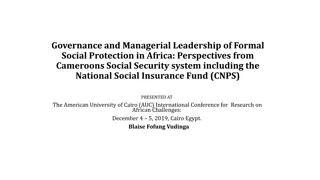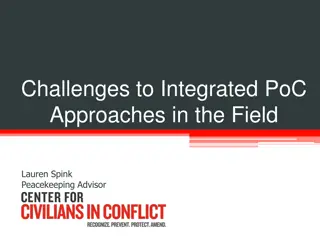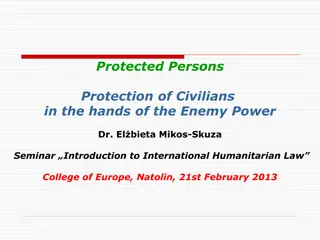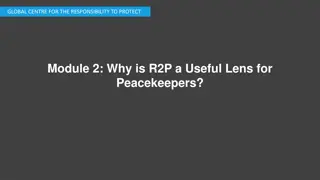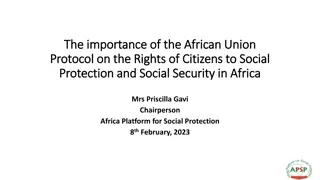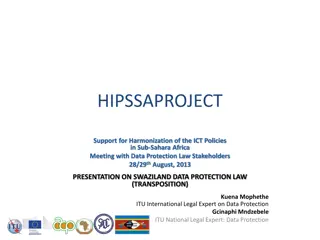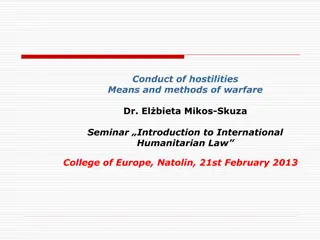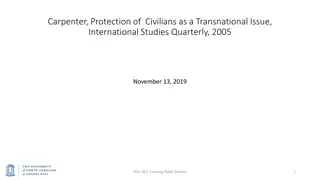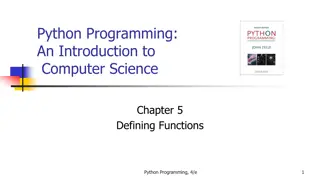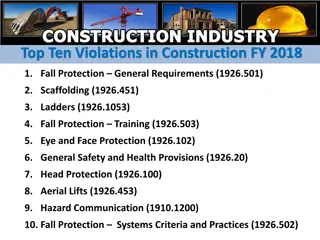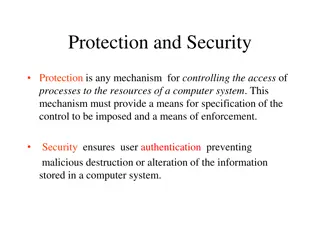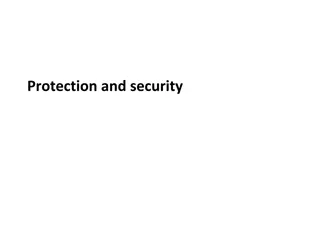Challenges in Defining Protection of Civilians Training Programs
The challenge of defining Protection of Civilians (PoC) training programs lies in the complexity and overlap of different definitions and interpretations surrounding the concept. Various perspectives highlight the importance of protecting civilians from violence and harm, but semantic confusion and vagueness in terminology pose obstacles. This ambiguity impacts operational effectiveness and understanding within international missions, requiring clarity and alignment across stakeholders for successful implementation.
Download Presentation

Please find below an Image/Link to download the presentation.
The content on the website is provided AS IS for your information and personal use only. It may not be sold, licensed, or shared on other websites without obtaining consent from the author. Download presentation by click this link. If you encounter any issues during the download, it is possible that the publisher has removed the file from their server.
E N D
Presentation Transcript
Protection of Civilians Training: Mission Impossible? Welmoet Wels PAX Conference Protection of Civilians: Shared Goals, Different Visions? 4 October 2017, Utrecht, The Netherlands
PoCTraining: The Classic Programme 1. Overview / background to international missions 2. Introduction to various concepts and frameworks 3. Definitions / scope of PoC in policies and mandate 4. Role of military component in PoC 5. Role of police component in PoC 6. Role of civilian component in PoC 7. Role of partners / humanitarian organisations in PoC 8. Scenario exercises in mixed groups
Challenge: Defining PoC All necessary action, up to and including the use of force, aimed at preventing or responding to threats of physical violence against civilians, within capabilities and areas of operations, and without prejudice to the responsibility of the host government to protect its civilians. (Commonly used UN mandate definition) A protection mandate refers to the sum of all aspects of protection concerns reflected in a mandate, including physical, legal, and other protection tasks aimed at enhancing the level of protection afforded to civilians in the area of operations. (Typical PoC definition as used in guidelines and policy documents roughly since 2010)
Challenge: Defining PoC to protect people from violence and from being forced against their will (humanitarian protection principle) Protection of civilians is the act of protecting from violence and minimizing harm toward those not directly participating in hostilities (academic publication 2015) providing protection strategies and tools for security management to human rights defenders who are at risk (INGO) Protection in humanitarian action is fundamentally about the people caught up in an emergency being safe from the harm others might cause them (INGO)
Challenge: Defining PoC Proliferation of overlapping, similar, yet different definitions Definitions are simultaneously used on two levels: conceptual and operational Definitions are not specific Terminology is vague Semantic confusion in the use of the word protection
Challenge: Integrating PoC Typical sequence in training events: 1. define roles and responsibilities per mission component / organisational blood type 2. joint scenario exercises Result: Underlines rather than integrates the differences Triggers territoriality and enhances compartmentalization Each component is looking for their own task in the scenario Overview and integration lags behind Understanding of PoC remains task-oriented
Opportunities Distinguish definitions of PoC as a concept and PoC as an operational activity Define PoC in clear, positive terms and avoid defining PoC with itself Utilize, not summarize, the many different definitions of PoC Ensure training events are integrated (civ-pol-mil and if possible humanitarian) Use scenario exercises to deduct first of all the protection issues at state, and then the different tasks and whose responsibility / expertise it is
